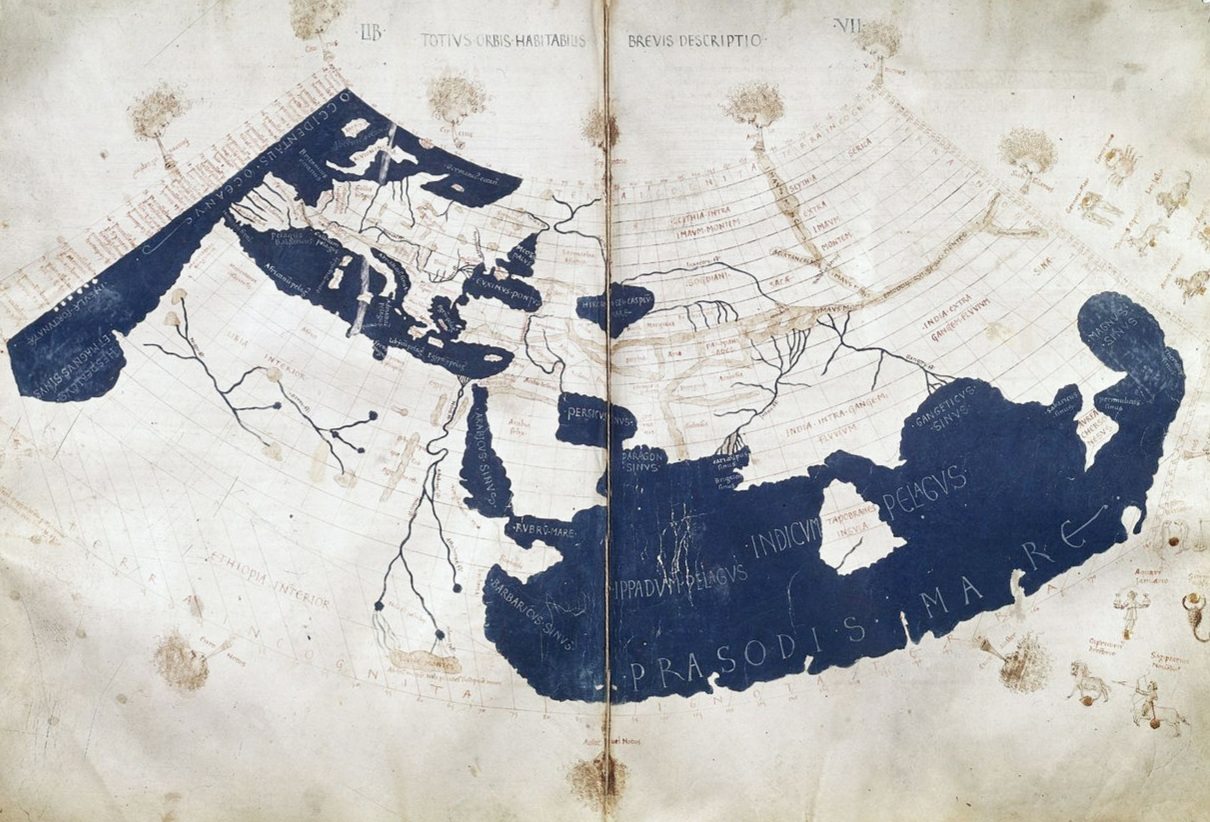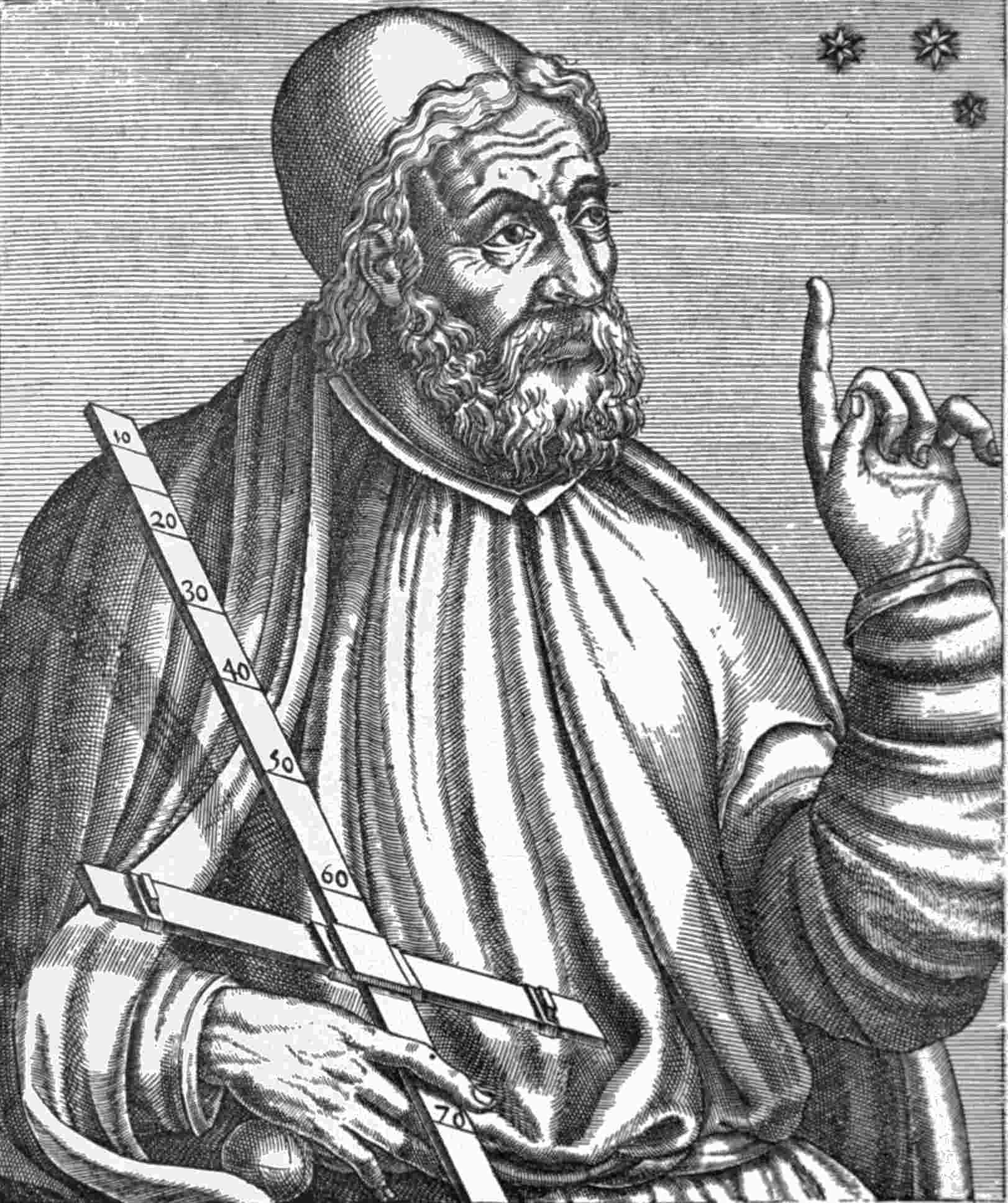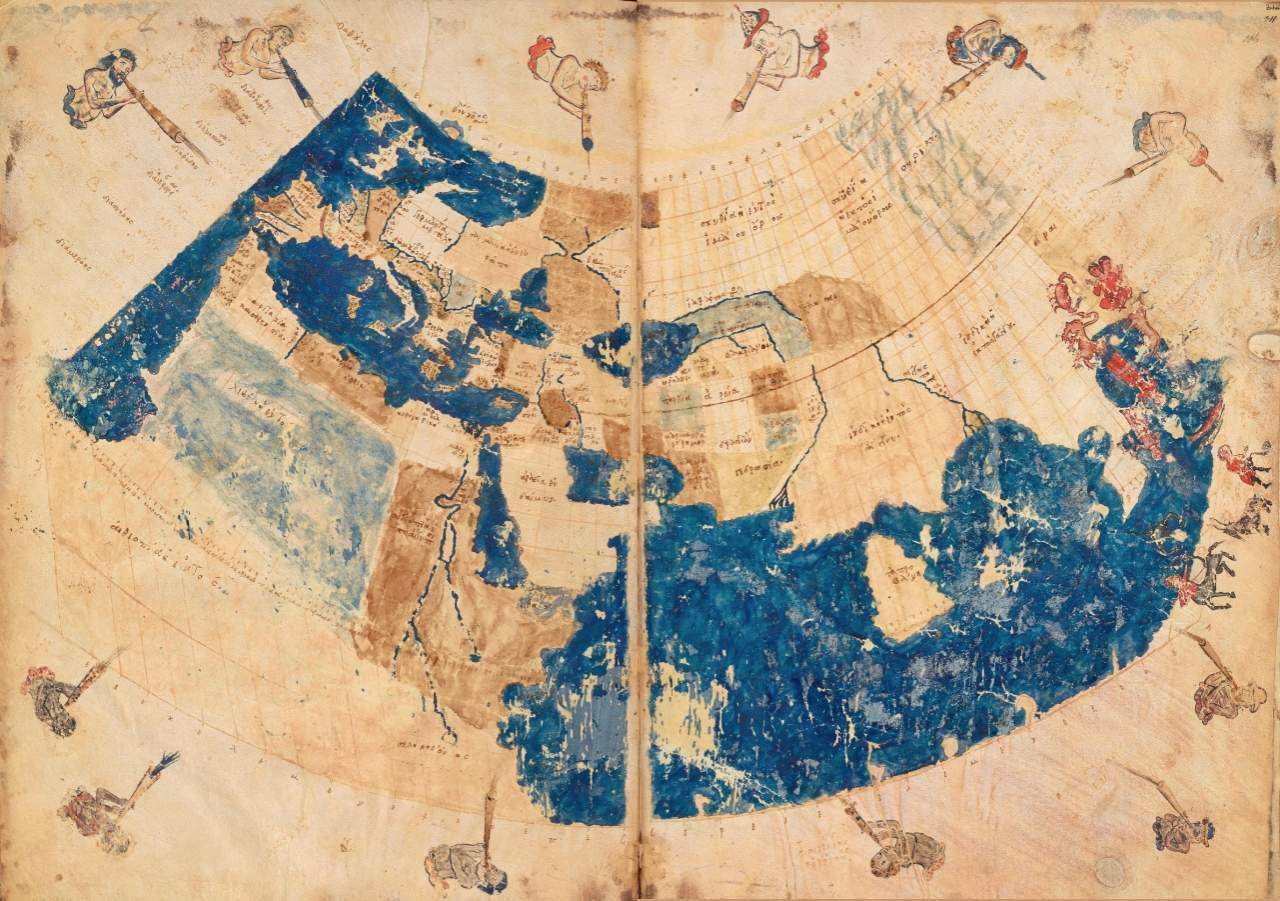A second century map of Germania by the ancient Egyptian-Greek scholar Ptolemy has always baffled scholars who have been, for centuries, unable to relate many of the enigmatic places depicted as known settlements.

But recently a team of researchers based in Berlin has managed to crack the code revealing that half of the Germany’s cities are at least 1,000 years older than previously believed.
Claudius Ptolemy
Claudius Ptolemy was an Egyptian scholar of Greek descent who flourished in the city of Alexandria during the 2nd century AD. He was an astronomer mathematician and geographer respectively, and a large part of medieval astronomy and geography were shaped on his ideas. His astonishing world map published as part of his treatise Geography in the second century was the first to use longitudinal and latitudinal lines.
Ptolemy based his maps mainly on the maps and writings of marine records (satires) from the 1st century AD, to which, however, he was highly critical. Ptolemy did use other sources which have not been traced and also added more current information available to him at the time mainly concerning the Asian and African coasts of the Indian Ocean. He would also have made use of astronomical and geographical specialist literature available in the Great Library of Alexandria.

Ptolemy is also well known today for his geocentric earth-centered model of the Universe ― now known as the Ptolemaic System. In Ptolemy’s Great Thirteen Volume Work (Book XIII), the syntax is also known as the Almagest. Ptolemy made some startling observations when compared with modern astronomical tables, some of them are so accurate that even Isaac Newton claimed he couldn’t have made them with the instruments he said he used. While, frustratingly, some of Ptolemy’s other observations are full of errors.
Ptolemy also wrote a treatise on astrology called “Astrological Influences,” in which he stated his belief that astrology was a legitimate science which describes the physical effects of the heavens on life on earth.
Ptolemy’s geography
Ptolemy’s geography was written around 150 AD in eight volumes and contained 26 maps in coloured ink on dry animal skin. It was essentially what today would be called an atlas though unfortunately his maps have subsequently disappeared and nothing remains of the work. But his index his work was painstakingly copied by hand at the time and redistributed but many of his maps were not redrawn when copies were made.
The majority of copies known to exist today do not include Ptolemy’s original drawings instead the books include maps made hundreds of years later based on his descriptions. However, over the years, various scholars have been able to redraw Ptolemy’s maps accurately from the longitudes and latitudes in degrees for roughly 8000 locations on his world map. So in essence, what we have in Ptolemy’s map is a clear and thorough picture of the world as it was known by an inhabitant of the Roman empire at its height.
This vast world extended from the Shetland Islands, north of Scotland, to the sources of the Nile, in Uganda, in the south from the Canary Islands in the west to China and Southeast Asia in the east. Ptolemy believed the world (land) ― as it was known then ― covered about a quarter of the earth’s surface, and in this he was fairly accurate like numerous ancient books and scholarly works especially those housed at the now disappeared library at Alexandria.
Ptolemy’s work
Ptolemy’s geography was lost for over a millennium to western scholarship but towards the end of the 14th century, during the renaissance period, his work was rediscovered and translated into Latin, the language of western scholars at the time. The work became popular once again and over 40 editions were printed. In fact, it wouldn’t be going too far to say that the new edition caused a sensation, challenging the very foundation of the medieval maps at the time.
Because until then, the map makers had based the sizes of countries and cities on their importance rather than on mathematical calculations. Therefore, the more important the country was perceived as being the larger it would appear on the map.
Ptolemy’s geography is an astonishing achievement when one considers that for over fifteen centuries it was the most detailed topography of Europe and Asia available, and the best reference on how to collect data and draw maps. The most authentic copy of Ptolemy’s map still in existence is an addition produced in the early 14th century (around the year 1300) and kept by the Vatican.
Ptolemy’s incredible atlas was in the news again recently when a new study of it was made by a team of classical philologists, mathematical historians and surveying experts at Berlin Technical University’s department for geodesy and geo information.

The early histories of the majority of German towns, east of the Rhine ― an area that the Romans were never able to occupy permanently ― are largely unknown and the places themselves are not stated in documents until the middle ages. Logically this should mean that the cities date back no more than 500 years or so however the researchers from Berlin Technical University Science have been able to challenge this assumption by producing an incredible map of Central Europe as it was 2,000 years ago based on Ptolemy’s geography.
One of Ptolemy’s maps was Germania Magna, a territory that must have been completely unknown to someone living in the distant Egyptian city of Alexandria. According to Ptolemy, this area is bordered by the Rhine in the west, the North Sea and the Baltic Sea in the north, the Danube in the south, and the Vistula and the Western Carpathian Mountains in the east.
Curiously, Ptolemy lists out 94 settlements in Germania while the far more accessible three provinces of Galia had only 114 settlements in total. Ptolemy also doesn’t attribute any of these Germanic settlements to a tribal group. Though he notes their latitude and longitude accurately to within a few minutes. If this was unknown non-roman territory where was ptolemy getting his information??
There’s also the major problem when Ptolemaic coordinates of the place are compared to its coordinates in the modern geographic reference system. They’re usually completely different, there are a number of reasons for this, but among them is the different “Zero Meridians (Prime Meridians)” of the Ptolemaic and modern reference systems.
There are also various errors in the Ptolemaic coordinates furthermore the majority of the place names in Germany Magna occur nowhere else and are only handed down by Ptolemy not by any other ancient writer. So although Ptolemy’s map provides us with the most comprehensive topographical description of ancient Germania, because of these aforementioned problems it hasn’t been possible up to now to reliably locate even a few of the places he mentions.
It’s known that Ptolemy never took his own measurements in northern and western Europe and certainly not in the Germanic lands. Researchers believe he may well have drawn on long-lost roman traders’ travel itineraries and sailors’ notes, or even consulted maps used by Roman legions operating in northern Europe in the form of war reports and maps. But the answer to the puzzle of Germania’s ancient settlements has never been found until now.
That is for the first time a team of experts combining skills in the field of surveying and mapping came together to try and solve one of Ptolemy’s map’s many mysteries. The Berlin-based team examined the data on Ptolemy’s map of Germany Magna for six long years, developing a so-called “geodetic deformation analysis” that would hopefully correct the map’s mistakes. One of the results of their work is the pinpointing of the hometowns of the legendary Germanic figures, Siegfried and Arminius to within six to twelve miles.
The team even produced a book called “Germania and the Island of Tula” about their fascinating project. Although the copy of Ptolemy’s geography held by the Vatican is thought to be the oldest, the Berlin team were somehow able to get hold of copies of a parchment which had been tracked down to Topkapi Palace in Istanbul, Turkey ― once the residents of the Ottoman sultans. The priceless document consisted of unbound sheepskin pages with writing in Roman capital letters. This is now believed to be the oldest edition of Ptolemy’s work ever discovered.
Using the newly discovered map, the team found that even minor German towns such as Saltscotton or Lalandorf had existed since at least 2,000 years ago. They found the site located at the confluence of the Elbe and Alster Rivers was the precursor to Hamburg and that Leipzig was known as Arigalia at the time.
In essence, these incredible discoveries show that half the cities in Germany are now 1000 years older than previously believed. Another fascinating aspect of the research has been the fact that a large amount of Ptolemy’s coordinates for ancient German settlements often turn out to coincide with sites where archaeologists have previously found gothic or Teutonic houses and large elaborate tombs erected for tribal princes. What more awaiting secret discoveries lie in the coordinates of Ptolemy’s maps?




